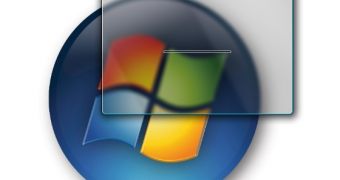With Windows Vista and the Office 2007 System, Microsoft has really indicated a strong evolution for the traditional graphical user interfaces that have shipped, in the past, with previous iterations of the Windows and Office products. As far as the Windows client is concerned, the Aero GUI has not been the hit Microsoft hoped for. While still being an immense step forward from what Windows XP brought to the table, the issues of hardware resource consumption is in fact what really hurt Aero, prompting critics to downplay the user interface overhauling in Vista. At the same time, while Office 2007 introduced a more radical redesign with the Ribbon/Fluent interface, the shift from Office 2003 was welcomed, unlike the mode from the XP UI to Aero.
And of course that the company is, by no means, stopping here. In fact, with Vista, and soon Windows Server 2008 and Vista SP1, out of the way, focus will fall on Windows 7. At this point in time, Microsoft has only revealed that Windows 7 is planned for availability in 2010, and it will be 2010 as Steven Sinofsky, Senior Vice President, Windows and Windows Live Engineering Group, the man in charge of the Windows project, has a reputation for meeting deadlines. Of course that one of the major aspects of Windows 7 will be its new graphical user interface. And the efforts that the company has done with Vista will be repeated with Windows 7. In this context, Manuel Clement, Experience Design & Research Lead, Microsoft offered a preview of where the company is heading with the development of next generation of graphical user interfaces in the coming five years, in an interview with Microsoft Expression.
"At a high-level, some interesting concepts come to mind for the future of user interactions over the next few years: using multiple screens in various locations or rooms, ubiquitous wireless internet connection, carrying your personal data on you - either stored on a physical device or accessible from any connected device/computer. Alternative input models will also start to become refined and a part of people's lives: handwriting, voice, multi-touch. Things like Photosynth and Surface, as well as Vista AERO and Zune's media player software and device UI, give us an idea of what faster graphic processors and richer UI Platforms will enable in the future. To me, it is all about making it more comfortable for people. Enable them to do what they want to do more conveniently", Clement predicted.
Additional hardware resources will be inherently synonymous with a new standard in terms of interaction and, in this regard, Windows 7 will simply come to the table with a much more rich UI platform than Vista. At this point in time, you also have to keep in mind that with Sinofsky taking over Windows, Julie Larson-Green, Corporate Vice President, Windows Experience Program Management, is responsible for the "end-user interaction design and overall experience for the Windows products after the release of Windows Vista", according to her official bio. Julie Larson-Green, just in case that the name doesn't ring any bells, has lead the design efforts for the GUI of Office 2007, namely the Ribbon/Fluent user interface.
But, Clement is no stranger to Windows Vista. He has been involved in the design of the operating system's sounds, icons for XAML and various WPF files, as well as the Vista Upgrade Advisor, and the WPF (Avalon) platform. In addition, Clement also worked on SkyDrive, Windows Live, the implementation of Vector-based Glass window frames in Vista, some of the animated AURORA graphics/backgrounds and in the building of the Longhorn UI.
"XDR means '(User) Experience Design & Research'. We are in charge of designing the user experience including interaction models of the Windows operating system as well as the Windows Live connected services (Messenger, Spaces, SkyDrive, etc) and Internet Explorer. UX Lead means User Experience (Design) Lead. Essentially I manage a team of people and I also contribute to the design of various products as a Designer. My specific team designs Common Controls, UI Patterns, Alternative Input (handwriting, touch, voice), Live Mobile-Client integration, UI Platforms. My background is a blend of programming, visual, sound and interaction design", Clement explained regarding his work with Microsoft.

 14 DAY TRIAL //
14 DAY TRIAL //